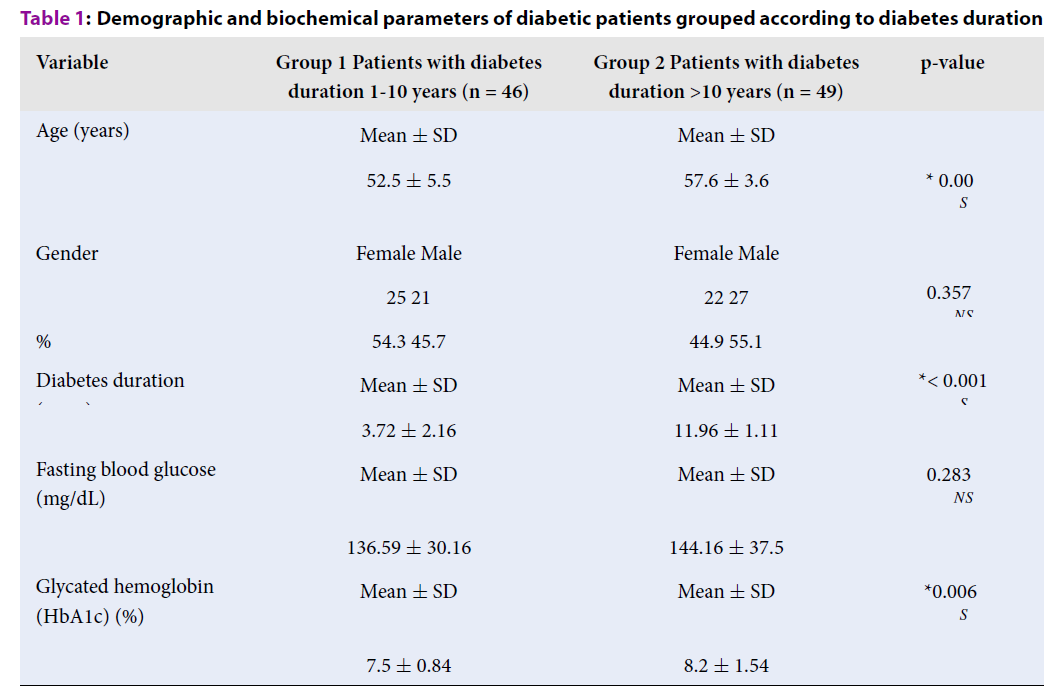Correlation of serum fluorescence of advanced glycation end products with diabetes duration and glycemic control in type 2 diabetic patients
DOI:
https://doi.org/10.15419/bmrat.v7i8.623Keywords:
Serum fluorescent advanced glycation end products, diabetes duration, glycemic control, correlationsAbstract
Introduction: Advanced glycation end products (AGEs) and diabetes duration have roles in the development of the vascular complications associated with morbidity and mortality in diabetic patients. The present study was conducted to estimate and find the association between serum fluorescence levels of advanced glycation products with diabetes duration and glycemic control in type 2 diabetic patients.
Methods: 46 patients who had diabetic duration of less than ten years and 49 patients with duration more than ten years were included in the study. Serum fluorescence of AGEs was measured using a simple spectrofluorometric method. Correlations of AGEs with diabetes duration, fasting glucose, and glycated hemoglobin levels were analyzed. The incidence of microvascular complications in patients of both groups was examined.
Results: Significantly higher serum fluorescent AGE levels (p < 0.001) and higher incidence of microvascular complications (p = 0.000) were found in diabetic patients who had diabetes duration of more than ten years, poorer glycemic control and higher age. Serum levels of fluorescent AGEs showed significant positive correlations with duration of diabetes mellitus, glycated haemoglobin and fasting glucose levels.
Conclusion: Screening patients for AGEs, intensive glycemic control, and therapeutic strategies that target molecular mechanisms involving advanced glycation end products are warranted in older patients with longer diabetes duration to minimize their risk of developing complications.

Downloads
Published
Issue
Section
License
Copyright The Author(s) 2017. This article is published with open access by BioMedPress. This article is distributed under the terms of the Creative Commons Attribution License (CC-BY 4.0) which permits any use, distribution, and reproduction in any medium, provided the original author(s) and the source are credited.
